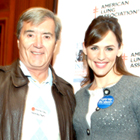 |
1. Read and follow package cooking instructions. Most frozen or refrigerated convenience foods must be properly cooked before you can eat them. The label can tell you whether the product needs to be thoroughly cooked or simply reheated. Uncooked meat or poultry, for example, must be cooked to a high enough temperature to destroy harmful bacteria.
2. Know when to use a microwave and when not to. Sometimes, thorough cooking requires the use of a conventional oven, not a microwave. Microwave oven cooking times may not be enough to cook some foods to a safe internal temperature. Microwave ovens—even those equipped with a turntable—can cook unevenly and leave “cold spots” where harmful bacteria can survive. You may need to use a conventional oven, convection oven or toaster oven. So always follow the package cooking instructions.
3. Know your wattage. If your microwave’s wattage is lower than that required in the cooking instructions, it will take longer for the food to reach a safe internal temperature. The higher the wattage of the oven, the faster it will cook food. If you don’t know the wattage of your microwave, check the inside of the oven’s door, the serial number plate on the back of the oven or the owner’s manual.
You can also do a “time-to-boil” test to estimate the wattage: Mea?sure a cup of plain tap water in a two-cup glass measuring cup. Add ice cubes; stir until water is ice cold. Discard ice cubes and pour out excess water so only one cup remains. Set the microwave oven on high for four minutes. Watch the water through the window to see when it boils. If it boils in less than two minutes, its wattage is 1,000 watts or more. If it takes 2½ minutes, its wattage is about 800 watts or more. If water boils in three minutes, its wattage is 650 to 700, and if it takes more than three minutes, it’s 300 to 500 watts.
4. Always use a food thermometer to ensure a safe internal temperature. After the microwave or conventional oven cooking time is over, observe any “stand time” specified in the cooking instructions. During this time, the food continues to cook even with the oven off, and the temperature of the food continues to rise. No matter how you’ve cooked the food, use a food thermometer in several places to make sure the dish has reached a safe internal temperature.
You can learn more at www.fsis.usda.gov/Food_Safety_Education/Cook_It_Safe/index.asp and www.fsis.usda.gov/PDF/Microwave_Ovens_and_Food_Safety.pdf.
###
Subscribe to our FREE Ezine and receive current Health News, be eligible for discounted products/services and coupons related to your Health. We publish 24/7.
www.HealthNewsDigest.com
For advertising/promotion, email: [email protected] Or call toll free: 877- 634-9180









